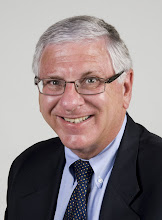Simply put, they are required to as part of providing their service to us.
In mid-2021, The State of Connecticut Public Utilities Regulatory Authority (PURA) issued a far-reaching decision for CT’s major utilities establishing a nine-year program to support the installation of electric vehicle charging infrastructure across the state.
(PURA is Connecticut’s regulator ensuring that investor-owned electric, natural gas, water, and telecommunications companies provide safe, clean, reliable, and affordable utility service and infrastructure to the state’s residents and businesses.)
PURA explained:
A long-term, statewide, comprehensive, and strategic program is required to deploy and integrate ZEVs and associated infrastructure in a way that maximizes electric system, ratepayer, and environmental benefits, while ensuring equitable access across the State to ZEVs and the benefits they provide. (See press release and summary.)
PURA’s July 14, 2021 decision covered the two electric utilities serving most of the state, UI and Eversource, and established an ambitious 9 year plan, launching January 1, 2022:
A proactive approach to facilitate the seamless integration of new and emerging EV-related technologies is required to realize the potential electric system benefits of EVs, along with the economic, health, and environmental benefits they provide.
PURA explained:
The key program elements consist of a combination of incentives for networked Level 2 electric vehicle supply equipment (EVSE) and direct current fast chargers (DCFC), as well as accompanying rate design offerings. Eversource and UI will administer the Program in their respective service territories, though the same program offerings will be made available to all EDC customers to ensure a streamlined, statewide approach to EV infrastructure investments and coordinated outreach.
The EV Charging Program identifies five program areas, or market segments, to optimize EVSE deployment and associated distribution system infrastructure necessary to meet Connecticut’s transportation electrification goals:
(1) Residential Single-Family Level 2 Charging;
(2) Residential Multi-Unit Dwellings (MUDs) Level 2 Charging;
(3) Direct Current Fast Charging (DCFC);
(4) Destination Level 2 Charging; and
(5) Workplace & Light-Duty Fleet Level 2 Charging.
Taken together, these program areas represent a comprehensive, portfolio approach to enabling ZEV deployment on the scale necessary to meet the State’s EV policy goals and GHG reduction targets, as discussed herein.
In addition to requiring utility incentives to drive down the price of EV charging equipment, the order required the two utilities to own (and put into their rate base) the infrastructure up to a site’s utility meter, which might include service feed, transformer, meter and service panel, and conduit and connector.
The program also included additional incentives for EV charger installation in underserved communities, capacity mapping, a “managed charging” program, addressing the impact of demand charges, a focus on DC fast-charging along transportation corridors and other high-traffic locations, a focus on light-duty fleets, and more.
Of specific interest to Connecticut’s Clean Cities Coalitions was the education and outreach plan:
A coordinated and effective education and outreach plan is essential to achieving the EVSE deployment targets established across the Program portfolio. As Program Administrators, the EDCs will play a key role in site host recruitment and education on the benefits of EVSE charger installations. Tailored solutions for each program area will be required to engage with potential program participants, particularly with stakeholders in underserved communities. In addition, the EDCs are directed to identify and leverage existing state, regional, and national EV driver awareness campaigns and establish partnerships to promote in-state initiatives.
The Authority emphasizes the importance of establishing a consistent messaging campaign to raise awareness and solicit participation in the statewide EV Charging Program. Accordingly, the Authority directs the EDCs to jointly develop and submit a proposed education and outreach plan, including, but not limited to, a coordinated messaging campaign, associated evaluation metrics, and an annual budget for each EDC, no later than October 15, 2021, for Authority review and approval. The emphasis of the proposed education and outreach plan must be on the messaging campaign; therefore, activities relating to evaluation of that campaign shall not exceed a pre-determined percent of the annual budget for each EDC’s education and outreach plan, unless the EDC provides justification for and the Authority approves some higher allocation. The Authority recognizes each EDC’s service territory may have instances where tailored messaging is appropriate; nevertheless, developing a cohesive, coordinated statewide approach is critical to successful program implementation that enables widescale EV adoption. Upon review of the EDCs’ proposed joint education and outreach plan to implement the EV Charging Program, the Authority reserves the right to contract with a third-party to develop a statewide education and outreach plan if PURA finds the EDCs’ proposed plan is inadequate.
Specifically in 2021, PURA required:
By 8/1/21: Both utilities would establish working group on managed EV charging for single-family residences, workplaces, and light-duty fleets in order to optimize the distribution system and maximize grid level benefits of transportation electrification for all customers.
By 8/15, each utility would submit plans for EV charging rates for both level 2 and DC fast-charging.
By 10/15, each utility will submit a program:
- Implementing EV charging for single-family residences, workplaces, and light-duty fleets
- Addressing non-networked chargers at single family residences
- Detailing site prep for make ready infrastructure
- Proposed budget for the first 3 years of the program
- Joint education and outreach plan
- Draft of an EVSE vendor RFP
By 12/15, jointly establish performance metrics
By 1/1/22, begin offering rebates:

No comments:
Post a Comment